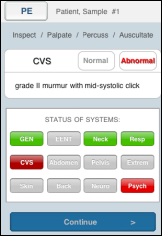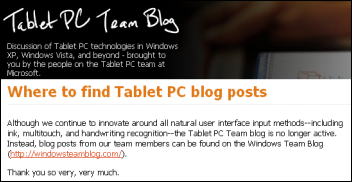I doubt much has changed with the former Cerner except that Safra stopped ripping the business after Oracle ended breaking…
News 2/12/10
From Spaghetti Eddie: “Re: VA and Cerner. I’m pretty sure the answer is that VA hasn’t decided yet, but it sure isn’t looking like a Cerner LIS decision. Still very very hung up on the issues associated with integration of EHR with DoD (AHLTA). Also, there’s a big study group of industry types (the Industry Advisory Council Vista Project) that was formed at VA’s CIO’s request to look at how to modernize VistA, clearly with an eye toward remaining open source. All in all, VA’s not there yet.” I’ve also read that the VA just opened up a program to solicit IT ideas from its employees instead of the contractors that are usually whispering in its ear.
From The PACS Designer: “Re: Google faster broadband. Google has announced that it is considering 1 gigabit per second broadband to the home as the next frontier it would like to conquer. Google said that speed would be fast enough to download a high-definition, full-length feature film in less than five minutes. Healthcare could also benefit from such a service as the medical image files can be 500MBs and larger.” I ran across this Extormity-like parody site that touts Google TiSP Beta, a free wireless broadband service that runs fiber optic cable in sewer lines. Incidentally, TPD is updating his list of iPhone apps for healthcare, so if you know of some cool ones, add a comment at the bottom of this posting and he will happily retrieve it.
From Ms. Curious: “Re: Sunquest. I hear they lost 30% of their sales force this week.” Unverified. I would be surprised if that were true.
From EHR Geek: “Re: Stanford Health Care. CEO Martha Marsh is retiring in August.” Unverified. I would be uninterested if that were true. Actually, only because I don’t know her and don’t know much about Stanford, but I assume I have readers who follow them.
From Joe: “Re: greenhorn manager. Reminds me of the old ‘three envelopes’ story that your younger readers may not have heard.” I thought everybody knew that one, but here goes (I’m using male pronouns only for convenience, not bias). A fired CIO’s replacement finds a note from his predecessor, saying he left three envelopes in the desk drawer to be opened only when things are going really badly. Six months later, the network goes down for most of a day, so the CIO opens up the first envelope and finds a note that says, “Blame the previous CIO.” Great idea! He makes up a convincing story about a historic lack of maintenance and capacity planning, saving his skin. Months later, the executive team complains about excessive IT operational and capital budgets, threatening to freeze expenses. Time to open another envelope. This one says, "Blame your coworkers." He does, arguing that the unchecked technology demands of his executive peers have made him the victim. Months later, doctors are pushing back against mandatory CPOE, saying that it’s typical CIO arrogance that makes him think he understands the challenges physicians face. He opens the third envelope, which says, “Prepare three envelopes.” I will also modestly add that several years ago, I won some local IT acclaim for embellishing the story with a fourth envelope that involved bringing in consultants, but I’ll stick with the non-customized version for the noobs.
From Lippy: “Re: greenhorn manager. It’s not just hospitals that like to stir things up. [vendor name omitted] just added an extra layer of management, making a chart that looked like the one from 4-5 years ago. The structure does not address sales-limiting problems inherent to most vendors — product limitations, support issues, and price. But, redoing an org chart makes upper management look like they are on top of things and justifies their existence.”
From Dulcinea: “Re: Wireless Life Sciences / Continua symposium in San Diego. Wish I had a recording of Patrick Soon-Shiang. He was all over the place from physics, biology, engineering, to healthcare integration based on the rail system network.” I can’t figure the guy out. He’s a drug company billionaire (some say a cutthroat businessman) claiming only benevolent intentions in getting involved financially (supposedly) with California’s interoperability project. What little I’ve heard him say publicly about it didn’t make a lot of sense to me either, but then again he’s at a level appropriate to a guy with a lot more zeroes in his net worth than me. I’d still like to interview him to see what he’s about.
Bassett Healthcare (NY) is recognized by the “Stories of Success” program sponsored by HIMSS and the American Society for Quality. Its submission involved quality and safety improvements using the SIS perioperative suite.
Siemens renews its agreement with NextGen that allows it to sell that company’s physician practice systems to its customers. I hadn’t thought of it until now, but Siemens seems to be the only big hospital systems vendor that has done very little with regard to either acquiring or building practice systems. The market seems to be clearly indicating that those two previously separate demographics have quite a bit of overlap, so they seem to be at a disadvantage.
Medicity’s customer summit was last week, with half of its 700 customers in attendance and featuring presentations by David Kibbe and Marc Probst, among others. I had missed that, along with CEO Kipp Lassetter’s thoughts about California’s statewide HIE project and the transition of CalRHIO’s work to the state’s new governance organization.
Listening: good old anti-corporate, anti-government, Texas-based country from James McMurtry. I heard We Can’t Make It Here in a restaurant yesterday and was mesmerized enough to rush home and Google the lyrics to see who sang it. Turns out it was the son of Larry McMurtry, the guy behind the best Western ever made, Lonesome Dove. Makes me want a Lone Star, some brisket, and a pickup truck.
e-Val MD announces its H&P application for the iPhone and iPod Touch.
Confused by all the military HIT terms like CHCS, AHLTA, and VistA? Here’s a good overview and history, although not a very complimentary one when it comes to billions in costs and FCCs (fat cat contractors, for which I’ve decided to coin my own acronym) jostling each other at the taxpayer trough.
A gentle nudge: my reader survey awaits your electric touch, so titillate it, please. This is one of few times that your vote (and comments) make a difference.
Thanks very much to those several vendors who have invited Inga and me to their HIMSS shindigs. At least two of them are featuring some big-name entertainment that we’ve heard about (one has booked a 2010 Grammy winner, another will be rocking out with my favorite Athens beehive hairdo party band). I can’t speak for Inga, but I’m sure I won’t be able to go since HIMSS is really hard work for me with our own event and a ton of HIStalk writing that keeps me up late every night and eating McDonald’s (last year) and Subway (the year before), but it is delightful to be asked and I appreciate it.
Speaking the HIStalk event at HIMSS, I haven’t forgotten about readers who won’t be going to Atlanta. For the first time in HIMSS history (as far as I know), we will be streaming a party live over the Internet with full audio and video. We will have a little broadcast booth where our team will interview willing party-goers about whatever’s on their mind – meaningful use, who has the cutest shoes, or how many drinks they’ve had. The crew will have to swear not to let their cameras stray onto any scandalous behavior that may be taking place outside the broadcast booth since it may get a little bit rowdier this year with an open bar and a St. Patrick’s Day theme. More details to follow. For those who have asked, yes, there will be funny beauty queen sashes again this year (it’s an Inga thing that I gripe about since I have to assemble them, but it makes her happy).
I know I keep saying this, but if you’re waiting on something from me, hang in there — I am not ignoring you. My e-mail box is overflowing, I have HIMSS stuff to do, and of course I still have to make a living by day. I usually catch up over the weekend, but even that is threatened since I have interviews to do then.
Tony Cook joins GetWellNetwork as VP of marketing.
An interesting tidbit from the Cerner earnings conference call: the company had to reclassify some of its accounts receivable because it’s a subcontractor to Fujitsu, which is still duking it out with NHS in England. Cerner executives are clearly advanced when it comes to optimal buzzword deployment (they love words like footprint, space, and agile). Also casually mentioned: company president Trace Devanny is being relocated to London “to spearhead an increased focus on global markets and opportunity.” It seems curious that Cerner would allow its president to live and work overseas when only a tiny bit of its business comes from there, so I’m guessing there is more to that story.
Finally a healthcare jury verdict that makes sense: the Texas nurse who was fired and charged with “misuse of official information” for confidentially reporting concerns about a perpetually trouble-prone doctor to the state’s medical board is acquitted. The jury took less than an hour to dismiss the case, with the jury foreman saying, “We don’t feel that what she did was wrong because she had concern for the patients. Nurses are the eyes for the patient.” The nurse and a colleague who was fired over the same incident are now considering adding another claim to their lawsuit against the doctor, hospital, sheriff, and prosecutor: malicious prosecution. Reports are suggesting that the doctor not only peddled quack vitamins, but that perhaps also had previously hired as one of his salespeople the sheriff who went after the nurse.
Needless chemical nit-picking: this radio station’s headline trumpets that a family had “CO2 poisoning”. Those kids must drink a lot of soda.
As an IT guy, I’m fascinated by this article that talks about validation of embedded programming in medical devices. Pacemakers contain 80K lines of code and infusion pumps 170K, all prone to the same bugs as application code (memory leaks, improperly initialized variables, divide by zero errors, mishandling of variable type conversions). Those vendors, however, apparently have much more stringent testing methods than some of the hospital systems vendors I’ve worked with, where “compiled without errors” is synonymous with “passed a rigorous QA review.” (here’s an old RPG programmer’s joke I just remembered: hospital customer: “Are you sure this fix will work?” programmer: “Yes, I only had to set the gen level up once to get it to compile.”)
And speaking of that, I’m inspired to share my Five Answers You’d Rather Not Get from your Application Vendor When Reporting a Software Problem: (a) we already know about that and we’re working on it, so you wasted your time researching its cause on our behalf; (b) we don’t really want to look at it unless you can dedicate the resources to duplicate the problem and document it for us, even though we have a worthless QA department whose job you will be doing for free as a paying client; (c) we have a fix, but it’s going in a release you won’t be installing for at least a year since you wisely wait for all of our upgrade-related disasters to happen to other customers who don’t know any better; (d) that database error and file corruption problem is working as designed, so we will add your request to that list of enhancement ideas that we haven’t touched since 2001; and (e) you haven’t complained lately and we’re off doing enhancements for customers bigger, better, and newer than you, so can we just close your ticket so the suits won’t be all over us for bad metrics?
UVA chooses Sunquest Collection Manager for specimen collection.
Following disastrous financial performance, both the CFO and the VP of revenue cycle management of Jackson Health System (FL) quit. The board was not happy that the CFO’s numbers were off a smidge: he said the hospital lost $47 million in 2009, but the real number was $204 million. For 2010, the predicted loss is now pegged at $229 million.
Medicare fraud, Chapter Gazillion: a West Virginia coalfield clinic is raided and its non-physician owners charged for using a doctor’s DEA number to prescribe controlled drugs for four years, billing the government for physician services that were actually performed by extenders. Two doctors were also charged, one who admitted he knew Medicare bills were going out under his name even though he hadn’t seen a patient in 15 months. If you’ve ever been there, none of this will be at all surprising.
Microsoft may whine about all the attention Apple is getting for the iPad while nobody wants Windows-powered tablets, but their focus is apparently fickle: they shut down the Tablet PC Team blog, apparently dumping that group into the gulag that is the Windows organization. Or, maybe they’re just giving up without a whimper to Apple. I found this through OnTheRun.
HIMSS adds US CTO Aneesh Chopra to the conference keynote lineup. HIMSS always back-loads its keynoters hoping to get attendees to stick around, so he’s on Wednesday, meaning the audience will be somewhat diminished but still massive compared to the less-than-a-planeful that Sully Sullenberger will address Thursday at 12:30, long after most attendees are already back at work.
E-mail me (with only modest hopes for a quick reply).
HERtalk by Inga
From Tanya: “Re: Google Buzz. It’s like Facebook, only without any of my friends!” Buzz appeared in my Gmail account yesterday. So far, it looks like a me-too product without all the cool bells and whistles of Facebook and Twitter — and without the friends.
In light of NextGen’s announced acquisition of Opus Healthcare, I found it interesting that Siemens chose today to announce its renewed its strategic alliance with NextGen. Was Siemens wanting to ride the wave of NextGen’s five minutes of spotlight? Or did NextGen and Siemens want to reiterate that the Opus acquisition doesn’t have any affect on NextGen’s go-forward EHR strategy? In any case, it’s interesting to note that the Siemens / NextGen relationship (which goes back perhaps five years?) has resulted in 35 Siemens clients deploying NextGen software throughout their physician networks.
Continuum Health Partners (NY) selects Sunquest Information Systems for its LIS solution.
NuHealth, another New York health system, signs a $5 million contract with Allscripts to provide EHR, PM, and ED solutions across its hospitals and employed physician networks. The health system will also establish data exchange between the Allscripts solutions and the hospitals’ Eclipsys Sunrise, Sunquest lab, and Amicus radiology systems
Yuma Regional Medical Center (AZ) plans to spend $73 million implementing Epic EMR. The hospital says the five-year project will create 49 new jobs and includes creating connections with local providers.
This has to be one of the goofiest EMR surveys ever. A Practice Fusion-sponsor survey asks patients if their doctors stored their medical records digitally (48.4% said they did.) Now how exactly are patients making that determination when the “experts” can’t agree on what should be classified as an EMR? I mean, just because a doctor writes something on a piece of paper, does that mean the practice doesn’t have EMR? If the doctor types something into a computer, does that mean the practice has EMR (maybe he/she is simply checking up on e-mail). Does this survey tell us anything of value?
Henry Schein Medical says it will continue expanding sales of MicroMD, despite the recent death of founder Ajit Kumar. Kumar took medical leave in September, soon after being diagnosed with lung cancer, and died January 15th. VP/GM Keith Slater will continue to oversee operations at MicroMD, which is expecting 25% sales growth this year.
Nuance rolls out a new bonus-incentive plan for employees that meet certain performance targets. Based on the current stock value, CEO Paul Ricci stands to earn an additional $7.25 million. To receive his full bonus, Ricci must also stay with the company through September 30, 2011. Nuance posted a 21% percent in revenue at the end of its fiscal first quarter.
Akron General Health System (OH) signs a strategic agreement with McKesson to provide Practice Partner EHR/PM to its PHO nd affiliated community physicians. McKesson reseller Complete Healthcare Solutions will provide implementation and support to a potential 500 community providers. The hospital McKesson’s Horizon Clinicals and is deploying the CPOE part of HEO.
Merge Healthcare releases Q4 and 2009 numbers: $2.1 million loss for Q4, compared to last year’s $1.9 million gain; annual net income of $300,000 compared to 2008’s net loss of $23.7 million. Merge’s quarterly net sales grew to $19.3 million from $15.1 million a year earlier.
I see HIMSS has scheduled three separate “Meet the Bloggers Sessions” at the conference. They’re billed as roundtable discussion that give attendees a “behind the scenes” look at the responsibilities and dedication required to maintain a successful blog. Mr. H and I were invited to participate, but we opted to keep our low profiles. Now that I see the hunky John Halamka is on one of the panels, I am re-thinking that decision. (Gosh, what if I were able to sit right next to him???) Anyway, I might just sit in to learn what Mr. H and I should be doing since most of the time we’re just winging it.
HIIMSS also just posted the initial list of companies participating in the Health IT Venture Fair. HIStalk sponsor EDIMS is a presenter. I’ve sat in on a few of those sessions in the past and I must say that listening to all those financial projections mixed in with marketing hype requires me to keep the caffeine handy. Actually some of the new stuff is cool and it’s interesting to hear who companies view as their competition and why a CEO believes his company is well positioned to be the next industry superstar.
Potential good news for physicians who practice at hospital-owned ambulatory care facilities. The Senate is considering adding language to its current “Jobs Bill” that would allow some hospital-based physicians to receive ARRA subsidies. Current ARRA language excludes hospital-based physicians, much to the disappointment and anger of ER docs, pathologists, and physicians practicing in hospital-owned ambulatory facilities. However, the proposed bill would give physicians in this latter group a chance to qualify for ARRA funds (though pathologists and ER docs would still be exempt). For more details, see SEC. 620 under EHR CLARIFICATION.
The CEOs of four rural Texas hospitals claim their new rural RHIO is the first of its kind. The competing hospitals, which have a combined 104 beds, will share costs and clinical information using a single Web-based EMR from Prognosis Health Information Systems.
Halfpenny Technologies adds healthcare veterans Bob Cox and Mike Meyer to its leadership team.
Christiana Health Care System (DE) signs a three-year contract with Zix for the ZixCorp Email Encryption Service.
An Allegheny County judge okays a class-action lawsuit against UPMC on behalf of patients who said it overcharged them for copies.Pennsylvania state law allows “reasonable rates” to cover actual expenses for copies of medical records. The judge agrees that UPMC’s per-page fee of $1.50 may not be reasonable. OK, I’ll say it. Everyone knows UPMC has an EMR. So how time-consuming and costly is it to pull up a patient’s chart and hit Print? If it really costs them $1.50 a page, than UPMC has a much bigger problem on its hands.











I’ve heard of the ‘three envelopes’ a few times over the past few years. I turned 25 today and I’m guessing from all my co-worker comments of “You seem so much older” and “You’re so young!” that I fall in the noob range.
Speaking of being a noob I recently started to learn some RPG because of legacy code on our AS400/iseries and the joke was amusing.
Inga–If you come to the meet the bloggers session I’m in, I may yet call you out. I’ll look forward to seeing dozens of women in the audience claim to be you!!
Siemens/NextGen announcement is a yawn and never did seem to live up to its initial hype. I bet though 35 Siemens customers don’t amount to a whole lot of EMR license sales.
Much more interested in the Opus/NextGen for several reasons including whether or not this makes Opus more a legit competitor to McKesson Paragon MEDITECH, and CPSI among others in the very near future, what effects this will have on NextGen and their development staff as their EMR product is robust from a feature standpoint but getting a little long in the tooth in other regards, and just how willing small hospitals & their physicians are going to be willing to pony up cash for what is one of the more expensive solutions on the ambulatory side.
Re: VA and Cerner. Spaghetti Eddie is off on a couple of points. Cerner is the vendor of choice for the VA LIS. The acquisition process is ongoing with the VA currently looking for Cerner to demonstrate the software in a hosted environment. Alpha testing sites are being selected.
Second, VistA isn’t really open source within th VA. Yes, the software can be acquired and modified by anyone, but there is absolutely no chance that the VA will use those modifications from an outside developer. There is no true bilateral/bidirectional open source model of development for Vista within the VA.
Re: “HIIMSS also just posted the initial list of companies participating in the Health IT Venture Fair. HIStalk sponsor EDIMS is a presenter…”
This year’s Venture Fair has a great lineup of innovators. Based on investor and attendee interest to date, it promises to be memorable. More info at the Venture Fair home page: http://www.himssconference.org/venturefair
Regarding “Yuma Regional Medical Center (AZ) plans to spend $73 million implementing Epic EMR.” Is it just me or are others wondering how in the world healthcare can support the costs associated with the Epic system? Yes, Epic may have some additional functionality over other vendors but I would venture to guess that they also lack functionality in some areas. Is the perceived additional functionality worth the enormous difference in costs between Epic and most other vendors (e.g. Meditech)? Enlighten me – with the mounting deficits, rising healthcare costs, etc. I am struggling to understand how shelling out ungodly amounts of money for Epic will help.
YRMC – EPIC: YRMC’s announcement and web site exudes enthusiasm for the project. Refreshing to see a organization making a investment instead of focusing on cost cutting and staff reduction. I wish them the best in meeting very ambition goals. Also good to see EPIC win over the McKesson’s of the world.
RE: NextGen and Siemens–35 deals in 5 years…pretty sad.
As for Mr. H and Inga not being at the bloggers session- probably a good idea, can’t mix you two professionals with all the amateurs !
Re: HIMSS backloading keynote speakers, maybe it’s just me but I’m much more inclined to stay to see Sully Sullenberger than Aneesh Chopra.
Re: Smalltown CIO – when organizations report the cost of an Epic install, they usually report the total cost of implementation over a number of years (some times over 10 years). This is different from other vendors’ PR releases, which must only specify the amount the vendor is getting (due to SEC rules, etc.)
Given that, what would the total cost of implementation for a Meditech system (or any other system) be over a number of years, factoring staff, hardware, IT infrastructure updates and maintenance)?
Mr. Curious is right – I am one of the ones who quit this week. Just was not fun anymore. They really need to get a new head of sales that will try harder to keep people around.
The challenge now is HIMSS. The two remaining demo people quit. They have zero demo people. Also a few of the reps that quit were suppose to work the booth. They are srambling to put together a back up plan. They tried to pay me to stay through HIMSS but my new job is starting.
Hey grizzled veteran, remember that Noah’s Ark was built by amateurs, but the Titanic was made by professionals
Sunquest did have 30% of the salesforce leave this week, and all product specialists. Look for support people doing demos at HIMSS.
Sunquest has had over 60% of all sales leave in the past 6 months. Only 4 reps left with more than 1 year of experience.
PigEarstoPurses –
“Also good to see EPIC win over the McKesson’s of the world.”
Uh… Epic is a Mckesson of the world.
To me, it’s not always a good thing to see a $73 million price tag, with no details on the strategy…
Implementation costs are about the same for Meditech vs. Epic outside of the vendor fees. (Software, Support and Services).
Most of the hardware, human capital, change management, process redesign all have to be done regardless of the logo in the corner of the screen.
Vendors always place too much importance on the feature/function of the software. The bulk of the work is done to process redesign.
Having said this, some vendors do a better job of guiding their clients through this than others.
In general…there is a base line of cost that are part of what most would consider a “System implementation”. The delta between Meditech and Epic would not be significant percentage of the total cost.
Re: Bassett winning an award from HIMSS
How many hospitals were in the hunt for this prestigious award?
“The selection of submissions was conducted by a Peer Review Body. Members of the HIMSS Patient Safety & Quality Outcomes Committee and additional subject matter experts from organizations such as The Joint Commission (TJC), , the National Committee for Quality Assurance (NCQA), and the American Society for Quality (ASQ), provided support to the review process.”
I now see that the Joint Commission is in bed with the EHRVA trade group HIMSS. You can sure bet your bottom dollar that the Joint Commission is interested in safety with its HIMSS association.
I know who you are Flim Flam and I can’t believe you are saying that… you dreamed that one up although this is the way you would like to see things happening. There are atleast two other choice companies that are being alpha tested…they are not alpha testing just one company.
Why would the VA spend massive resources on developing multiple interfaces to VistA to alpha test more than one LIS vendor? Cerner has been the vendor of choice for some time now and the Vista integration has been the delay due to a lack of development resources. I have no interest in who the vendor is actually. I’m just an outside observer but would certainly be interested in the process that you think is being used by the VA for this project.